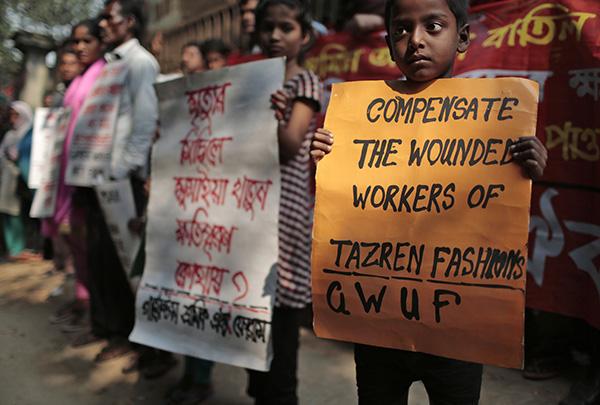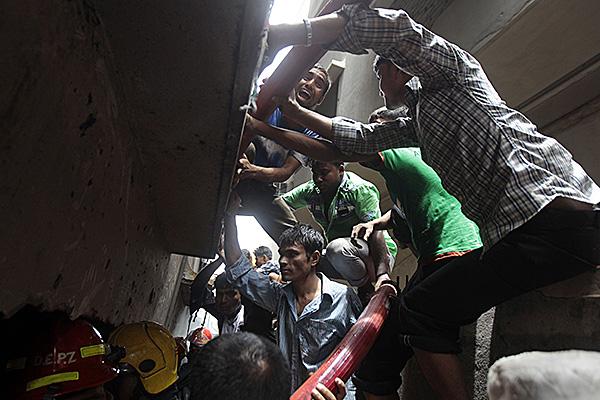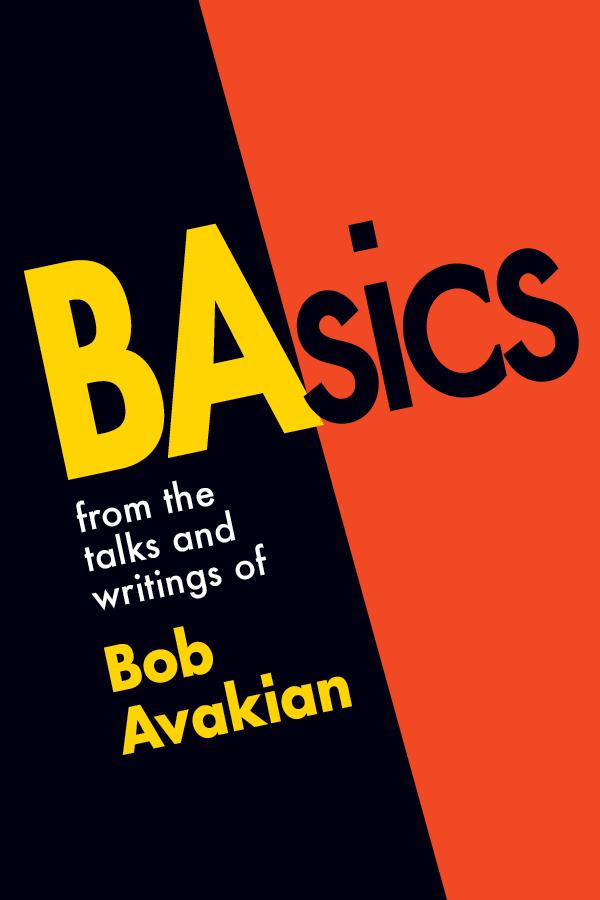Bob Avakian has written that one of three things that has “to happen in order for there to be real and lasting change for the better: People have to fully confront the actual history of this country and its role in the world up to today, and the terrible consequences of this.” (See “3 Things that have to happen in order for there to be real and lasting change for the better.”)
In that light, and in that spirit, “American Crime” is a regular feature of revcom.us. Each installment focuses on one of the 100 worst crimes committed by the U.S. rulers—out of countless bloody crimes they have carried out against people around the world, from the founding of the U.S. to the present day.
See all the articles in this series.


Children of Tazreen Fashion workers who died in the Bangladesh garment factory fire, November 2014. Photo: AP
THE CRIME:
During the early morning hours of November 24, 2012, 600 of the more than 1,400 daily workers at the nine-story Tazreen Fashions factory near the Bangladesh capital of Dhaka stayed on to work overtime producing ready-made garments (RMG) for Walmart, Sears, Walt Disney Co., and other major transnational retailers.
A fire, apparently starting near electric generators on the ground floor in an area of the factory used illegally as a warehouse, rapidly spread upward throughout the building.


Workers attempt to escape a fire at Arba garment factory in Ashulia, outskirts of Dhaka, Bangladesh, June 13, 2013. Photo:AP
Workers were trapped inside the overcrowded factory because there were no emergency exits and the three narrow staircases between floors all led to the flaming warehouse on the ground floor and the windows were barred. The top floors, which had only recently been hastily added to the legally licensed six floors, were under construction and padlocked, blocking any access to the roof. Many bodies were burned beyond recognition, and many suffered smoke inhalation and suffocation.
One survivor, who worked on the fifth floor, reported that he escaped by climbing out of a third-floor window onto bamboo scaffolding that was being used by construction workers. He said he lost his mother, who also worked on the fifth floor, when they were trying to make their way down. “It was crowded on the stairs as all the workers were trying to come out from the factory. There was no power supply; it was dark, and I lost my mother in the dark. I tried to search for her for 10 to 15 minutes but did not find her.” Early during the fire, managers reportedly told workers to ignore the fire alarms, saying it was a mock fire drill, and to return to work. Nine midlevel officials were actually accused of padlocking exits and preventing workers from leaving the building.
By the time the flames and smoke finally cleared, at least 112 workers had died at the Tazreen factory that night or over the next couple of days, and at least 200 were injured.
Evidence found in the burned-out building along with factory records showed that at least six Walmart suppliers were sourcing Walmart goods from Tazreen in 2012 and that Walmart was the biggest customer in the months leading up to the fire.


April 26, 2013, Savar, Bangladesh. Relatives of garment workers who worked in the collapsed eight-story building that housed five garment factories. Photo:AP
While the Tazreen Fashions factory fire is the deadliest one in the history of Bangladesh, factory fires and other preventable catastrophes are not uncommon there. Lax safety standards, poor wiring, and overcrowding are blamed for causing several deadly factory fires every year, resulting in dozens of deaths, more than 600 from 1990 to 2012, and ongoing. Just six months after the disastrous Tazreen fire, and seven miles away from it, the Rana Plaza building, which housed five garment factories on four of its eight floors, suddenly collapsed and killed at least 1,133 people and injured about 2,500 others, making it the deadliest known garment factory disaster in history.
Currently, about four million people (mostly women from poorer rural areas) work in some 4,500 factories (and many also work at home, often in the “informal” workforce) making garments for export all over the world, but mainly to the U.S. and Western European countries. Bangladesh is the world’s second largest apparel exporter following China, and the U.S. is the largest importer of Bangladeshi ready-made garment products (accounting for about 25 percent of Bangladesh’s total exports), followed by Germany, the UK, and France. Wages and working conditions are among the worst in the world, with barely subsistence level pay (typically less than $37 per month in 2012) aggravated by long (up to 19-hour) shifts at times. Factory buildings are frequently unsafe and are often put up and/or illegally modified in a hurry to allow owners to promise and meet higher volumes and tighter deadlines from buyers.
THE CRIMINALS
U.S. and other imperialist multinationals with backing from the U.S. political system—the “buyers” (big brands, transnational retailers) who contract with various suppliers who then subcontract with factories to assemble ready-made garments according to specifications and timelines that these big brands direct. In this way, they direct and coordinate the economic chain of production in the RMG industry, continuing to contract with manufacturers who violate or ignore safety concerns, and thereby continue the arrangement of abuses against workers and women as well as the persistence of unsafe buildings and working conditions.
Walmart, as a particular leading transnational big-brand buyer, and its “director of ethical sourcing,” Sridevi Kalavakolanu, who, even while denying that it still contracted with the recognized-to-be-unsafe Tazreen Fashions factory and claiming to be doing everything they can to encourage safer working conditions in Bangladesh, led a movement among buyers even after the fire to refuse to invest in electrical and safety improvements there. Walmart itself had actually repeatedly audited the Tazreen Fashions factory and identified serious fire hazards that were never effectively addressed by anyone. While they claimed to have told suppliers to stop using this factory at some point before the fire, the evidence proved otherwise. And, shortly after the fire, Walmart admitted that “very extensive and costly” repairs and renovations would be needed at Tazreen and many other factories in Bangladesh. But Walmart said it had no intention of paying for any improvements, and insisted that it was “not financially feasible for the brands to make such investments.”
Tazreen factory managers, who misled workers about the reality of the fire, prevented them from escaping, and even locked some of the escape routes.
Delwar Hossain, the factory owner, who denied that the building was not safe to work in. After his arrest while reportedly trying to flee to India, he added, “It was my fault. But nobody told me that there was no emergency exit, which could be made accessible from outside. Nobody even advised me to install one like that, apart from the existing ones.”
Bangladeshi government officials, who rarely pass, and even more rarely, monitor and enforce laws to support worker rights, minimum wages, and safety, or to address the ongoing sexual harassment and abuse of women workers.
THE ALIBI
Finger pointing regarding both the specific cause of the fire and who was to blame was widespread. After an initial report that defective wiring was likely the problem (as is the case for about 80 percent of all factory fires in Bangladesh), the government issued a statement that there was an “act of sabotage” by an unknown party (which worker groups and activists suspect was a deliberate lie to excuse government inaction against the owners and managers). In 2001, after a similar factory fire killed 24 people, Bangladesh’s High Court had directed the government to set up a committee to oversee the safety of garment workers. But that directive was never implemented. Government officials claim that reaching agreement among owners in the industry to implement affordable reforms is difficult, and monitoring and enforcement of regulations even more so. Owners of these factories (many of whom also have power in the government as legislators or administrators) claim they don’t have control over the process and they can’t afford to do anything except what is required by the buyers to get and maintain a contract. Big-brand transnational buyers, in turn, claim that wage and safety issues are the owners’ responsibility, insisting that they themselves are doing their best to encourage compliance with government safety expectations, and that they are not contracting with owners and manufacturing facilities that are unsafe.
And furthermore, all claim that this disaster was an unfortunate accident while they are all doing the best they can to protect the economically crucial textile industry and continue to provide jobs for a section of the people (mainly women from poor rural areas) who otherwise would not have any jobs and would not be able to contribute to their family incomes.


BAsics from the talks and writings of Bob Avakian
If you can conceive of a world without America—without everything America stands for and everything it does in the world—then you’ve already taken great strides and begun to get at least a glimpse of a whole new world. If you can envision a world without any imperialism, exploitation, oppression—and the whole philosophy that rationalizes it—a world without division into classes or even different nations, and all the narrow-minded, selfish, outmoded ideas that uphold this; if you can envision all this, then you have the basis for proletarian internationalism. And once you have raised your sights to all this, how could you not feel compelled to take an active part in the world historic struggle to realize it; why would you want to lower your sights to anything less?
—Bob Avakian, BAsics 1:31
THE REAL MOTIVE
But the truth is that this deadly Tazreen Fashions factory fire (and repeated others that occur every year with more than 600 deaths from 1990-2012) is not just an unfortunate accident, and the reality is that the real beneficiaries of the whole production arrangement in Bangladesh are not the overworked and underpaid women workers, but the transnational big-brand buyers who fundamentally drive the entire process.
The specific local managers and factory owners and government officials all certainly played a role in the lax safety measures, poor wiring, harsh and overcrowded working conditions, substandard building design and construction, and misdirection of people desperately trying to escape the flames and smoke that caused the terrible deaths and injuries the workers suffered that day. But the big-brand buyers drive the process—they define the products they want, choose to contract with suppliers and subcontract with manufacturers, and set the terms for when and how the products are completed and delivered. As the international coordinator for the Clean Clothes Campaign, Ineke Zeldenrust, said, “These brands have known for years that many of the factories they choose to work with are death traps. Their failure to take action amounts to criminal negligence.”
They fail to take action because the true motive underlying all these decisions is the relentless search for profit, new markets, and especially cheaper sources of labor—the same motive that drove the growing transnational U.S. clothing companies to firmly establish Bangladesh’s major role in the garment industry in the late 1970s. “The reason Bangladesh went from zero to hero in the garment sector is because there is no country with such low labor and other costs,” said Arvind Singhal, chairman of the India-based retail consultancy Technopak Advisors. “No buyer is in a hurry to move from Bangladesh because Western retailers are stressed about passing any retail price increases to customers. Currently, there is no substitute for Bangladesh, where manufacturers even risk operating from rickety structures to cap costs.”
Sources and Additional Reading
“Bangladesh workers burned alive in death-trap garment factory,” A World to Win News Service, November 26, 2012
“Fire in Bangladesh Garment Factory Kills 121 People: If your shirt could talk...,” Revolution, December 9, 2012
“Bangladesh: The Human Cost of Cheap Clothes,” A World to Win News Service, April 29, 2013
“The Hellhole of Dhaka, Bangladesh,” Revolution, June 9, 2013
“Nicholas Kristof’s Ode to Imperialism… What Kind of World Is He Celebrating? What Kind of World Can Emancipate Humanity?” Raymond Lotta, Revolution, October14, 2013
“Everyone’s Talkin’ About Inequality—Let’s Talk About the System Causing It. Lesson from Bangladesh,” Revolution, January 6, 2014
“Documents Indicate Walmart Blocked Safety Push in Bangladesh,” Steven Greenhouse, New York Times, December 5, 2012
“Bangladesh factory fires: fashion industry’s latest crisis,” Jason Burke, the Guardian, December 8, 2013
“The Effects of Globalization on Bangladesh’s Ready-Made Garment Industry: The High Cost of Cheap Clothing,” Alexandra Rose Caleca, Brooklyn Journal of International Law, vol. 40, issue 1, article 7, 2014
“Rags, Riches, and Women Workers: Export-Oriented Garment Manufacturing in Bangladesh,” Naila Kabeer and Simeen Mahmud, Chains Final at www.wiego.org/publications
“Sabotage, really?” The Daily Star, December 19, 2012
“Bangladesh factory owner: I didn’t know fire exits were needed,” CTV News, November 29, 2012
“For cost-crunching retailers, Bangladesh reigns supreme,” Reuters, July 9, 2013
“Gap and Walmart in Bangladesh: A History of Irresponsibility and Empty Promises,” cleanclothes.org, July 2013
“Spinning the Chain; Lost in the Queue. International Restructuring and Bangladesh Women Garment Workers,” Rashed Al Mahmud Titumir, Solidarity Forum for Garment Workers of LDCs Dhaka, August 18-19, 2003, The Innovators
“Special Report: How textile kings weave a hold on Bangladesh,” John Chalmers, Reuters, May 2, 2003
“Bangladesh’s ready-made garments landscape: The challenge of growth,” McKinsey & Company Report in Apparel, Fashion & Luxury Practice, November 2011
